|
Additional Lessons |
 About These
Lessons About These
Lessons
The following classroom lessons are great for students
who want additional listening and reading practice. |
-
Travel America -
Beginner
Level. Do you love America and American
English? Learn before you travel. Facts and other
cool stuff about your favorite U.S. state. Great
English reading practice.
|
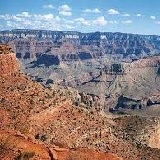 Travel
America - Washington Travel
America - Washington
(Beginner -
Reading)
Learn some interesting facts and read interesting
stories about Washington. |
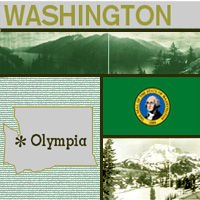 Washington Washington
In 1853, the Washington Territory was formed from
part of the Oregon Territory. Named in honor of
George Washington, Washington was the 42nd state to
join the Union, in 1889. Its coastal location and
Puget Sound harbors give it a leading role in trade
with Alaska, Canada, and the Pacific Rim. The state
has two major mountain ranges--the 7,000-foot
Olympic Mountains surrounded by temperate rain
forest on the peninsula west of Puget Sound, and the
more majestic Cascade Range, which boasts the
14,410-foot Mount Rainier and the volcanic Mount St.
Helens, which erupted twice in the 1980s. Although
the capital is Olympia, most people live in the
metropolitan areas of Seattle-Everett and Tacoma.
The state tree of the "Evergreen State" is the
western hemlock, and the flower is the western
rhododendron. |
Washington
State Flag
Washington's flag is the only state flag on a field
of green; an appropriate color for the evergreen state
(Washington's unofficial nickname).
Washington also has the only state flag displaying an image
of an actual person (George Washington, our first
president).
Legal Description of the Washington
state flag:
The official flag of the state of Washington shall be of
dark green silk or bunting and shall bear in its center a
reproduction of the seal of the state of Washington
embroidered, printed, painted or stamped thereon. The edges
of the flag may, or may not, be fringed. If a fringe is used
the same shall be of gold or yellow color of the same shade
as the seal. The dimensions of the flag may vary.
Washington is the only state that is named in honor of a
United States president. |
|
Source:
State Symbols USA |
|
|
 Washington
State Facts Washington
State Facts
Picture: state seal of Washington |
|
State Capital |
Olympia |
|
Nickname |
Evergreen State |
|
Motto |
Alki (By and By) |
|
Statehood |
November 11, 1889 (42nd) |
|
Origin of Name |
Named after George Washington |
|
Largest Cities |
Seattle, Spokane, Tacoma, Bellevue, Everett |
|
Border States |
Idaho, Oregon |
|
Area |
66,582 sq. mi., 20th largest |
|
State Bird |
Willow Goldfinch |
|
State Flower |
Western Rhododendron (rhododendron macrophyllum) |
|
State Tree |
Western Hemlock (tsuga heterophylla) |
|
State Song |
Washington, My Home |
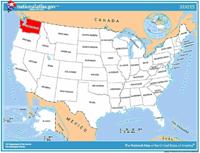 Travel and tourism site for Washington - This state
travel and territorial tourism site provides ideas for your
vacations, meetings, and more. Travel and tourism site for Washington - This state
travel and territorial tourism site provides ideas for your
vacations, meetings, and more. |
|
|
Washington Stories |
|
|
The Centennial Trail
What's the longest nature trail you have ever been on?
The Centennial Trail in eastern Washington state is a paved trail
that runs for 37 miles along the Spokane River -- from Nine Mile
Falls to the Idaho state line. Nine Mile Falls is also the site of
Riverside State Park, where visitors can camp and explore on foot or
horseback the many historic sites and natural features of the area.
Hikers or bicyclists can cross the Spokane River on the swinging
bridge, watch for a blue heron in the marshlands or read petroglyphs
(inscriptions on rocks) at the Indian rock paintings area.
If you head upriver along the Centennial Trail, it gets very hilly.
No motorized vehicles are allowed on the trail, so be ready to walk,
run or bike hard. The trail then passes through the city of Spokane
and continues through Riverfront Park, which has additional
attractions such as the Gondola, a chair-lift that takes passengers
on a 2,240-foot round trip to the bottom of the Spokane Falls and
into the heart of downtown Spokane. |
|
|
Mount Rainier, Washington
Do you know who Mount Rainier is named after? Or, do you know its
Indian name?
The mountain, a part of the Cascade Range, is a volcano that has not
erupted for 2,000 years. It is also the highest mountain in the
state of Washington. English explorer George Vancouver named Mount
Rainier in honor of another navigator, Peter Rainier. Some people,
however, prefer to call the mountain by its Indian name, Mount
Tacoma. The park's wildlife, waterfalls, lakes, and especially its
many glaciers have drawn more than 90 million visitors in the more
than 100 years since the park was created. Each year more than two
million people visit Mount Rainier National Park, many to see the
dramatic views of Mount Rainier. |
|
|
Northwest Folklife Festival
Would you like to see the Dance of the Killer Whales?
Then come see the Cape Fox Dancers perform at the Northwest Folklife
Festival in Seattle, Washington.
The Cape Fox Dancers are members of the Tlingit Indian tribes. Sixty
members strong, they drum, chant and dance. Traditional performances
include the Dance of the Killer Whale and the Welcoming of the
Chiefs. The Cape Fox Dancers wear colorful fringed blankets, white
fur caps with ermine (a small weasel) tails, and wooden masks of
ravens, eagles, bears, and wolves.
Held during Memorial Day weekend, the Northwest Folklife Festival is
one of the largest events in the country focusing on folk, ethnic,
and traditional art. This annual celebration promotes the culture
and traditions of the region's Jewish, Native American, African
American, Polynesian, Filipino American, Chicano and Mexican
communities. |
|
|
Washington State International Kite Festival
Not only is a kite fun to fly, but it is also beautiful to watch.
There are many different kinds of kites -- some much more complex
than others. One of the simplest kinds is the diamond kite. It has a
flat surface formed by two sticks tied into a cross and a tail that
helps keep it stable. It flies nicely in light to medium winds.
Throughout history kites have been used for many different purposes,
including to deliver messages, catch fish, spy on enemies, measure
the weather and send radio signals. Today, kites are mostly flown
for pleasure.
Every August, the Washington State International Kite Festival takes
place in the southwest corner of Washington on the Long Beach
Peninsula. There are workshops that teach people how to build,
decorate and fly kites. There are also competitions for kids, adults
and seniors. On the last day of the festival, everyone is welcome to
fly a kite at the same time, creating a colorful, beautiful sight!
If you fly a kite, make sure you have clear, wide open spaces away
from roads, trees, power lines and airports. And never fly in rain
or storms. So go out and fly a kite! |
|
|
Reflections from the Heart of a Small
Community
What will you remember about your school once you have left it?
In the spring of 1999, Maple Falls Grade School in Washington
closed. Nicholas Jacoby and other children in the area would attend
the newly constructed Kendall Elementary School. But Nicholas's mom
didn't want him to forget about the old Maple Falls Grade School, so
she made him a "memory book." As it turned out, it became a memory
book for the whole community. With the help of her friends, Mrs.
Jacoby published Reflections from the Heart of a Small Community:
Mount Baker Foothills and Maple Falls Schools 1889-1999. The book
included photos, stories, and memories of community members.
Nicholas's great-grandfather, Galen Biery, also helped create the
memory book. Even though he died before the book was produced, the
photographs that Biery collected were the inspiration for the book.
He began collecting old photographs of the area in the 1940s and he
interviewed people about life in the town. When he died in 1994, his
family donated his collection of more than 35,000 images to the
Whatcom Museum of History and Art.
Why not make a "memory book" of your school? Ask your teacher for
help. |
|
|
Suquamish Tribe
Can you guess how a boarding school nearly wiped out the traditions
of the Suquamish Indians of Washington state?
From the 1880s until the 1920s, children from the Suquamish Tribe
were sent to boarding school in order to make them "good citizens."
The idea was to take them away from tribal life and include them in
the modern world.
Suquamish children from the ages of 4 to 18 were sent to a boarding
school, where they were forbidden to speak their native language,
Lushootseed. Because they were missing from the tribe during the
winter months, when storytelling, basket making, and songs were
taught, these children lost an important link to tribal life. In
addition to not being allowed to speak their native language, they
could not practice any of their traditions and they were punished if
they did.
By the 1920s the practice of sending the children to boarding school
had ended. And, by the 1980s, the Suquamish were entering a period
of new hope for the future. Tribal businesses were created in order
to gain financial independence. Cultural centers were established
where tribal elders could pass on their knowledge of language,
traditional skills, and religious customs. And the Suquamish Museum
opened with exhibits on Suquamish culture and way of life, making
sure that the tribal life of the Suquamish Indians would be
preserved. |
|
|
Seafair
There are lots of things you can make with empty milk cartons, but
would you ever think to make them into a boat? That's exactly what
the clown in the photo is riding on!
If you come to Seattle's annual Seafair, you will probably see this
clown in the Milk Carton Derby. Seafair is a 10-day celebration of
Washington state's Puget Sound, a 100-mile-long inlet of the Pacific
Ocean. Since 1950, Seafair has sponsored a number of different
activities, including parades, high-dive acts, comedy skits, and the
Milk Carton Derby.
The Milk Carton Derby is a lot of fun! Both kids and adults put
their imaginations to work and build milk carton boats to compete in
five race categories. Almost any design is acceptable, so long as
milk cartons are the primary means of flotation. A half-gallon
carton will float about four pounds of weight, so for every 100
pounds of weight on your vessel, you will need 25 half-gallon milk
cartons. A minimum of 50 milk cartons is required for each boat and
motors are not allowed.
So whoever wants to enter the race will have to drink lots of milk! |
|
Source:
Library of Congress |
|
 National
Forests, Parks, and Monuments of Washington National
Forests, Parks, and Monuments of Washington
The following is a description of national
forests, parks, and monuments in the state
of Washington. If you plan to visit or live
in Washington for awhile then you should
definitely plan to visit some of these
fantastic places. |
|
|
|
National Forests |
 Colville Colville
With 486 mi (782 km) of hiking trails,
Colville National Forest has elevations that
range up to 7,300 ft (2,200 m) in the Kettle
River and Selkirk mountains. Part of the
Salmo-Priest Wilderness is in the forest
along with part of the Pacific Northwest
National Scenic Trail. |
 Gifford
Pinchot Gifford
Pinchot
Gifford Pinchot National Forest includes
Mount St. Helens National Volcanic Monument
and parts of seven wilderness areas. There
are 1,475 mi (2,374 km) of trails and 4,104
mi (6,605 km) of roads in the forest. |
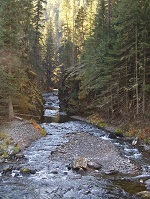 Idaho
Panhandle Idaho
Panhandle
There are two wilderness areas, Cabinet
Mountains and Salmo-Priest, and numerous
recreation opportunities in Idaho Panhandle
National Forest. This forest ranges from the
Canada–US border to the Saint Joe River,
which is the highest navigable river in the
world. This national forest is also
partially located in the states of Idaho and
Montana. |
 Mount
Baker-Snoqualmie Mount
Baker-Snoqualmie
In the Cascade Range, this forest includes
Mount Baker, at an elevation of 10,781 ft
(3,286 m), a glaciated stratovolcano. Mount
Baker National Recreation Area, the Pacific
Crest Trail, Pacific Northwest National
Scenic Trail, and portions of ten wilderness
areas are in the forest. |
 Okanogan-Wenatchee Okanogan-Wenatchee
Located on the eastern side of the Cascade
Range, this forest stretches from the
Canada–US border to the Columbia and
Okanogan rivers. There are 1,285 mi (2,068
km) of trails in the forest, including part
of the Pacific Crest Trail. |
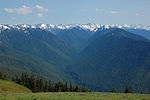 Olympic Olympic
Olympic National Forest surrounds Olympic
National Park on the Olympic Peninsula of
Washington. There are five wilderness areas,
occupying about 14% of the forest. This part
of Washington receives more rainfall
annually than anywhere else in the United
States. |
 Umatilla Umatilla
Located in the Blue Mountains of
northeastern Oregon, Umatilla National
Forest includes three wilderness areas,
occupying over 20% of the forest. The forest
has over 715 mi (1,151 km) of trails, 2,000
mi (3,200 km) of roads, and one of the
largest elk herds of any National Forest.
This national forest is also partially
located in the state of Oregon. |
|
|
|
National Parks |
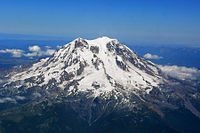 Mount
Rainier Mount
Rainier
Mount Rainier, an active stratovolcano, is
the most prominent peak in the Cascades and
is covered by 26 named glaciers including
Carbon Glacier and Emmons Glacier, the
largest in the contiguous United States. The
mountain is popular for climbing, and more
than half of the park is covered by
subalpine and alpine forests and meadows
seasonally in bloom with wildflowers.
Paradise on the south slope is the snowiest
place on Earth where snowfall is measured
regularly.[86] The Longmire visitor center
is the start of the Wonderland Trail, which
encircles the mountain. |
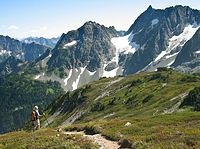 North
Cascades North
Cascades
This complex includes two geographically
distinct units of the national park, as well
as Ross Lake and Lake Chelan National
Recreation Areas. The highly glaciated
mountains are spectacular examples of
Cascade geology. Popular hiking and climbing
areas include Cascade Pass, Mount Shuksan,
Mount Triumph, and Eldorado Peak. |
 Olympic Olympic
Situated on the Olympic Peninsula, this park
includes a wide range of ecosystems from
Pacific shoreline to temperate rainforests
to the alpine slopes of the Olympic
Mountains, the tallest of which is Mount
Olympus. The Hoh Rainforest and Quinault
Rainforest are the wettest area in the
contiguous United States, with the Hoh
receiving an average of almost 12 ft (3.7 m)
of rain every year. |
|
|
|
National Monuments |
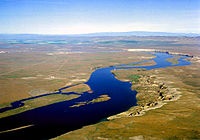 Hanford
Reach Hanford
Reach
Created from what used to be the security
buffer surrounding the Hanford Nuclear
Reservation, this area has been untouched by
development or agriculture since 1943. The
area is part of the Columbia River Plateau,
formed by basalt lava flows and water
erosion, and is named after the Hanford
Reach, the last free flowing section of the
Columbia River. |
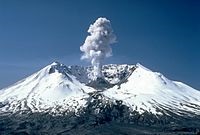 Mount
St. Helens Mount
St. Helens
Following the 1980 eruption of the
now-8,363-foot-tall (2,549 m) Mount St.
Helens, the environment was left to respond
naturally to the disturbance. The volcanic
crater is surrounded by a pumice plain with
deposits from the landslide, wind-blown
trees, and the Ape Cave lava tube. |
 San
Juan Islands San
Juan Islands
The San Juan Islands in Puget Sound have
several historic lighthouses as well as
rugged landscapes. They are the habitat for
orcas, eagles, and seals and provide
opportunities for kayaking, birdwatching,
and other activities. |
|
|
Travel America |
|
|
Olympic National Park
(Beginner - Listening,
reading)
A video lesson which shows you an interesting place in America.
The English is
spoken at 75% of normal speed.
Great English listening and reading practice.
This video is all about Olympic National Park. |
|
 Travel
America Travel
America
Do you love America and American English? Learn before
you travel. Facts and other cool stuff about your
favorite U.S. state. Visit the Fun Easy English Travel
America pages. Read about the beautiful National
Forests, Parks, and Monuments. Great English reading practice. |
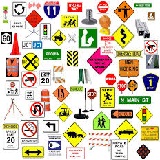 Drive America Drive America
Planning to drive in America? Learn the rules and
regulations. Great English reading practice. |
|